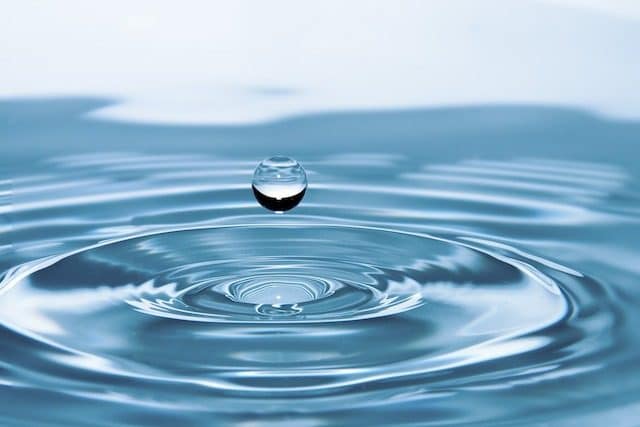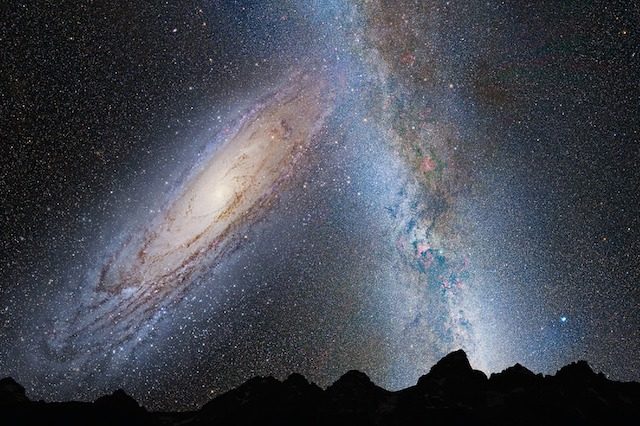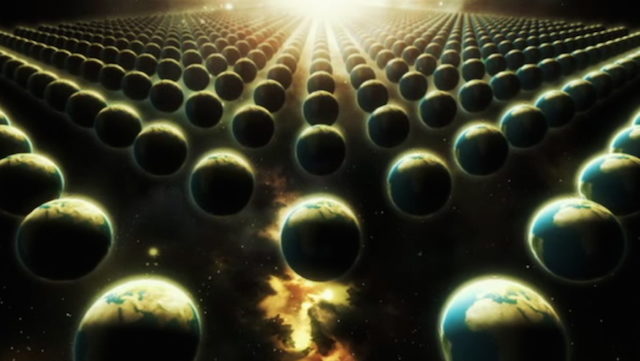Science fiction is usually predicated on the concept that there are numerous locations within the universe the place people or humanoid life may comfortably exist. There are lots of of planets in Star Wars and Star Trek which can be simply teeming with life. You’ll be able to strut round such as you personal the place. However in our actuality, we discovered just one place the place something dwelling can accomplish that comfortably and that’s Earth.
Up to now, we’ve not recognized life and every other worlds, however that doesn’t imply we haven’t discovered different worlds that might doubtlessly help life. Remember, a planet that might help life is sort of the identical as a spot you can name a home. A delivery container may very well be a home, however you’re going to wish to do some work to it. Likewise, a planet that might help life in all probability wants a little bit of a spit polish earlier than you’re elevating pigs there and planting crops. However, now we have recognized some potential prospects. Emphasis on potential.
The Goldilocks Zone

One of many first issues astronomers search for when making an attempt to determine a planet that might help life is whether or not or not it exists in what is named the liveable zone or the Goldilocks Zone. That is, in fact, impressed by Goldilocks and the Three Bears, the place some porridge was too sizzling, some had been too chilly, however one was good. You want a planet that’s within the good zone, in any other case will probably be too sizzling or too chilly to help life as we all know it.
The Goldilocks Zone is the world round a star the place a planet can exist and help liquid water. So, once more, it will probably’t be too sizzling or the water will evaporate and it will probably’t be too chilly or the water will freeze. Earth is, in fact, within the Goldilocks Zone round our solar. So that you want one thing roughly equal to that, however in fact, issues change slightly relying on the kind of star and the dimensions of the planet.
It’s value noting that “as we all know it” does lots of heavy lifting in these determinations. There are various potential methods life may thrive in environments that we’re not used to. Bear in mind, even on Earth, life has discovered a solution to exist round poisonous hydrothermal vents on the backside of the ocean. Stuff that will kill most issues in our world. However some issues have tailored and may’t survive. However for the needs of looking for a liveable planet, we’re going to stay with the fundamentals.
It has been theorized that life may exist on planets which can be outdoors of what we take into account the Goldilocks Zone, even in our personal photo voltaic system. As an example, liquid water might not be obligatory for all times, liquid methane may doubtlessly maintain life. Titan, the moon of Saturn, has an abundance of liquid methane and there was hypothesis it may maybe help life. Regardless that it’s a lot colder than Earth, it has been noticed to have our bodies of liquid like seas and rivers. The presence of life is unlikely, however extra analysis must be performed.
The Twilight Zone

The Goldilocks Zone just isn’t the one zone out in house value listening to. There’s additionally the Twilight Zone. some scientist was exceptionally excited when he bought to call that.
The Twilight Zone exists on the planet, moderately than out in house. It refers to a slim band on a tidally locked planet. So think about if Earth wasn’t rotating on its axis because it spun across the Solar. Only a stationary planet the place it’s consistently evening on one aspect and consistently day on the opposite. One aspect is freezing, one aspect is sizzling, and neither aspect can help life. However there’s a band proper across the heart which is the Twilight Zone. The place the place, in a really slim vary, circumstances may enable for all times to exist.
That is theoretical, in fact, however just like the Goldilocks Zone, it opens up the likelihood that different planets may need circumstances, nonetheless slim, that might help life as we perceive it.
So how does a planet even turn into tidally locked? In our personal galaxy, there are a selection of stars which can be smaller than our solar. Due to that, a planet must be nearer to it to be within the Goldilocks Zone. However when a planet will get too near its star, it turns into gravitationally locked in place. Meaning it will probably’t rotate, it will probably solely orbit, so one aspect is all the time dealing with that star. This can be a tidally locked planet. And since it’s within the Goldilocks Zone, water can doubtlessly exist in liquid type, however it could solely be in that slim band of The Twilight Zone.
It sounds sort of unbelievable, like science fiction stuff, but it surely’s extra widespread than you may suppose. As an example, the moon all the time appears to be like the identical while you see it at evening as a result of it’s tidally locked to Earth. It orbits the planet, however it will probably’t spin on its axis.
By the Numbers

So, if a planet can solely doubtlessly host life if it’s inside this Goldilocks Zone, what number of planets are we speaking about? Our photo voltaic system has one and we’re dwelling on it. However there are about 3,200 stars with planets in orbit within the Milky Manner Galaxy. That’s what we’ve found thus far, anyway. And within the universe at giant? There may very well be as many as 200 sextillion stars on the market, every with its personal system of planets.
If each star has a planet, then that’s 200 sextillion planets. However our star has 8 planets in orbit, which is definitely essentially the most we’ve ever found round a star thus far. If different stars have even 4 planets, properly, then that’s as much as 800 sextillion worlds within the universe.
Scale it again a bit and researchers have estimated that our galaxy alone might have as many as 300 million doubtlessly liveable planets. Information from the Kepler Telescope in addition to the European Area Company’s Gaia mission had been used to provide you with the potential numbers.
That 300 million can also be not an optimistic estimate by any means. It’s thought of to be pretty conservative, based mostly on the likelihood that solely 7% of sun-like stars host doubtlessly liveable planets. The true quantity may very well be fairly increased as the common anticipated price is 50%, that means that 300 million may very well be 2.1 billion or so. A few of these planets are comparatively near us, however comparatively are doing lots of heavy lifting in that sentence. As an example, in interstellar phrases, the closest planet to us is extraordinarily shut, but it surely’s nonetheless 20 light-years away.
The closest star to us is Proxima Centauri at 4.3 gentle years away. With present know-how, we may get there in 6,300 years. So our pleasant planet 20 gentle years away may take nearer to 30,000 years to succeed in. In different phrases, we gained’t be visiting these planets any time quickly.
Should you go by the Drake Equation, an equation formulated by astronomer Frank Drake, to find out the variety of liveable planets, issues look slightly totally different. Once more, that is very speculative, but it surely multiples the common price of star formation by the fraction of these stars which have planets by the common variety of planets that may doubtlessly help life per star by the common lifetime of a planet. As you may see, a few of these values are going to be imprecise. However, the reply, relying on the way you love to do your math, is between 1.4 billion and a couple of.65 billion.
What a Planet Wants

Being within the Goldilocks zone doesn’t essentially make a planet liveable. It simply means it’s in the fitting space to be liveable. You actually need to refine issues earlier than you may have life popping up. There are a number of issues {that a} planet ought to have if it’s going to host life. Once more, there are in all probability all types of circumstances we’ve by no means thought of the place totally different sorts of life may pop up. However for the sake of argument, we’re going with what we all know.
Planetary scientist Alessandro Morbidelli believes seven components should be current on a planet to ensure that it to be hospitable to life. The primary we’ve already coated. It needs to be the fitting distance from its star.
The second issue is that it must be in the fitting orbit. If the orbit is simply too elongated moderately than nearer to an ideal circle, there will likely be stretches through the 12 months when the temperatures differ drastically. Extremely chilly winters, extremely sizzling summers. The temperature vary would make it unlikely life may survive with such orbits.
The subsequent vital factor is a steady rotational axis. In comparison with Earth, Mars doesn’t have a steady rotational axis, and that has led to it shedding its ambiance. Our axis stays pretty steady due to our moon.
The fourth recognized issue is water. Sure, we already talked about how perhaps different liquids may help life however, for an Earth-like scenario, we’d like water. However not an excessive amount of! An excessive amount of and also you get layers of ice that forestall natural life from forming.
The composition of the ambiance can also be vital. We’re wealthy in nitrogen and oxygen. But when the planet shaped sooner, we may have had a hydrogen and helium-rich ambiance like Neptune and never been in a position to help life.
The subsequent issue is plate tectonics. You might not understand it, however plate tectonics keep our local weather. Volcanoes launch greenhouse gases, rains wash them away, and the CO2 cycle continues. Planets like Venus don’t have that.
Final however not least, a planet wants a magnetic area. That is offered by the spinning, molten core of the earth. Due to it, we’re shielded from lethal charged particles flying by house that will kill all life on Earth by stripping our ambiance if we didn’t have what is actually a power area.
One other issue not listed within the seven, however fairly vital, is the precise constructing blocks of life as we all know it. Carbon, oxygen, nitrogen, hydrogen, phosphorus, and sulfur are what ensured life started on Earth.
How Do We Discover Them?

So now we all know what we’re searching for. How do we discover them precisely? Effectively, it takes some work. Astronomers must discover a star, fortunately there are a bunch of these on the market. Then you want to have a look at what planets are in orbit across the star. You’re searching for one thing in that Goldilocks zone in regards to the dimension of the Earth.
Due to the distances we’re speaking about, you may’t simply level a telescope and have a look at an exoplanet like you’re peeping in your neighbor with binoculars. As a substitute, we’re searching for dips in gentle from a star that signifies a planet may very well be there in entrance of it. Meaning you may solely see them when they’re orbiting round that aspect of their star.
Then, wavelengths have to be analyzed to find out what sort of ambiance we’re coping with. Some planets are simply fuel, so we have to decide if this world is stable. Then the wavelengths of sunshine absorbed or mirrored by the planet assist us perceive its ambiance as a result of totally different atmospheres soak up or replicate gentle in another way.
As we proceed to find these planets, it’s value remembering that we’ve been broadcasting indicators from our world for a few years now. Scientists imagine at the very least 29 doubtlessly liveable planets would have obtained a sign from Earth by now.
Different Articles you Would possibly Like

